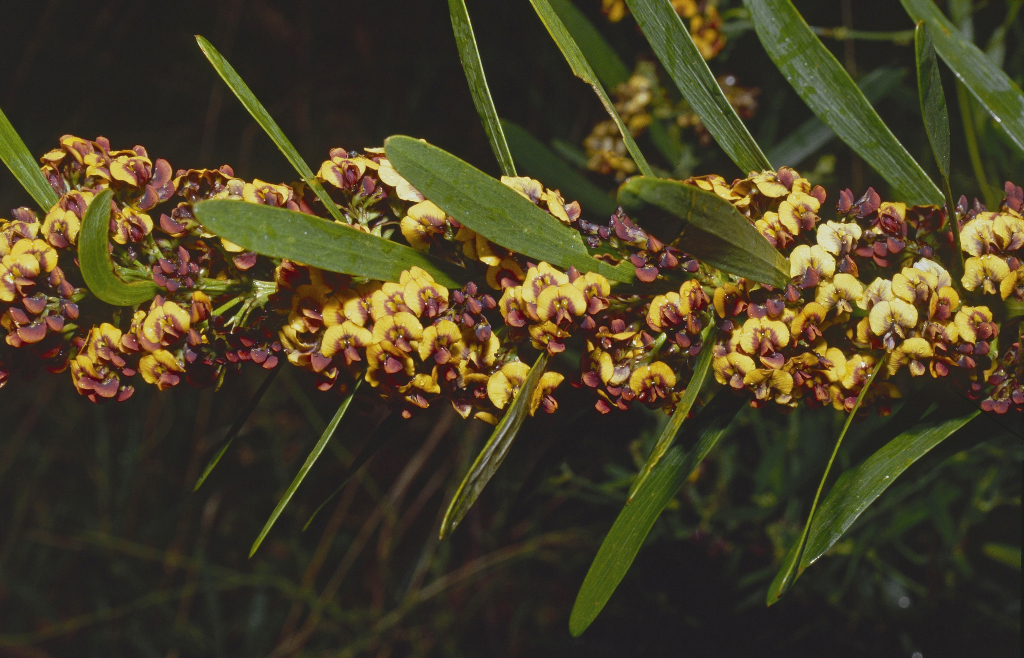Daviesia mimosoides
R.Br. Blunt-leaf Bitter-peaOpen shrub to 2 m tall, rarely arborescent to 5 m; branches many, glabrous; branchlets angular-terete. Phyllodes linear, elliptic or obovate, 1.5–20 cm long, 4–30 mm wide, pale green to glaucescent, dull, margins entire, rarely minutely crenate, apex acute or obtuse, base tapered, rarely cuneate, articulate, subsessile; midrib prominent, venation pinnate. Inflorescences 1–3 per axil, corymbiform, 5–10-flowered, rachis usually 3–15 mm long; peduncle 1–5.5 mm long; pedicels 1–9 mm long, subtended by a narrowly oblong appressed bract to c. 2 mm long. Calyx 2.5–5 mm long including 1–2 mm receptacle, upper 2 teeth united into a nearly entire lip; corolla mostly orange-yellow; standard transversely broadly elliptic, 6–7.5 mm long, 5.5–8 mm wide, orange-yellow with a maroon marking. Pod obliquely triangular, 6–10 mm long, 4–7 mm wide; seeds ellipsoid to reniform, compressed, 2.5–3.5 mm long.
Wim, VVP, VRiv, GipP, Gold, CVU, GGr, NIS, EGL, EGU, WPro, HSF, HNF, MonT, HFE, VAlp.
2 subspecies, differing only in phyllode characteristics and with intermediates sometimes encountered. Subsp. acris occurs at moderate altitudes, only on exposed rocky sites, while subsp. mimosoides sometimes occurs at similar altitudes but on more sheltered sites and on better soils (Crisp 1991).
Jeanes, J.A. (1996). Fabaceae. In: Walsh, N.G.; Entwisle, T.J., Flora of Victoria Vol. 3, Dicotyledons Winteraceae to Myrtaceae, pp. 663–829. Inkata Press, Melbourne.
 Spinning
Spinning
